Discover the secret to achieving tender, mouthwatering BBQ ribs using a low and slow cooking method in your oven. This comprehensive guide takes you through every step, from selecting the perfect cut of ribs to mastering the art of seasoning with a dry rub. Learn optimal cooking temperatures and times, and how to test for tenderness to ensure juicy, flavorful results. Finally, explore serving suggestions to impress your guests with this classic BBQ rib recipe.
- Selecting the Right Ribs for Low and Slow Cooking
- Preparing Your Ribs for an Oven-Based BBQ Experience
- The Magic of Dry Rub: Enhancing Flavor Before Cooking
- Mastering the Art of Slow Cooking: Temperatures and Times
- Monitoring and Testing for Tenderness: Knowing When They're Ready
- Tips for Serving and Enjoying Your Perfectly Cooked BBQ Ribs
Selecting the Right Ribs for Low and Slow Cooking
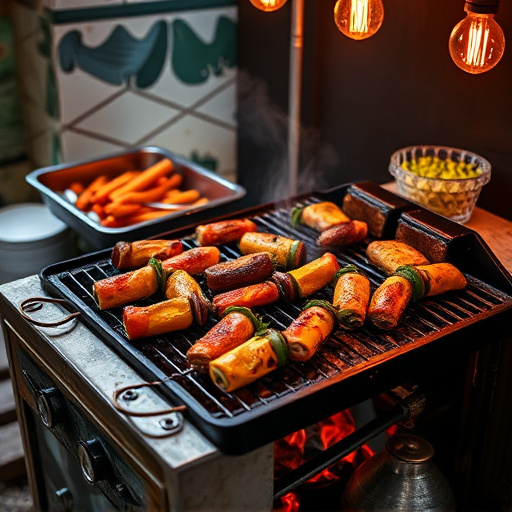
When it comes to low and slow cooking for maximum tenderness, selecting the right ribs is key. Opt for meaty, bone-in pork ribs with a good layer of fat. These ribs are often referred to as “baby back” or “spare rib” cuts, ideal for BBQ ribs recipe oven methods due to their balance of meat and bone. Look for ribs with visible marbling—the intramuscular fat that enhances flavor and keeps the ribs juicy during extended cooking times.
Avoid thin, tough cuts or ribs with excessive cartilage, as they won’t benefit from low and slow techniques. Consider buying whole rib racks and cutting them into individual ribs close to cooking time, ensuring freshness and quality. Properly selecting your ribs is a crucial step in achieving succulent, tender results when cooking BBQ ribs in the oven.
Preparing Your Ribs for an Oven-Based BBQ Experience
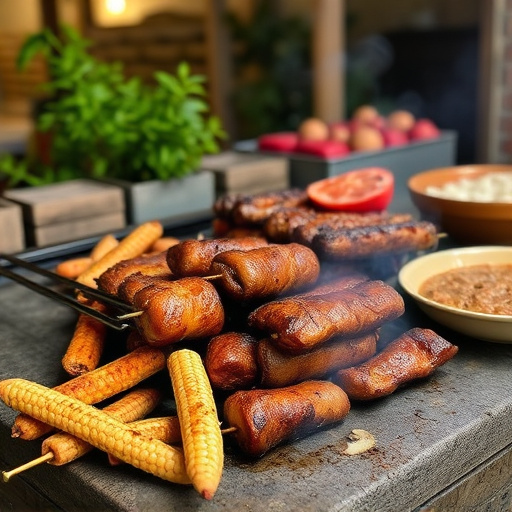
To prepare your ribs for an oven-based BBQ experience, start by selecting the right cut. Baby back ribs are a popular choice due to their ample marbling and smaller bones, making them easier to handle. Before cooking, trim any excess fat from the rib rack to promote even cooking and prevent greasiness. A key step is to dry rub the ribs with a mixture of spices like paprika, salt, pepper, garlic powder, and brown sugar. This step infuses the meat with flavor and helps create a crispy, caramelized exterior when cooked low and slow in the oven.
Once rubbed, you can wrap the ribs tightly in plastic wrap to keep them moist or use a dry rub only for an extra crispy texture. Preheat your oven to a temperature between 225°F (107°C) and 250°F (121°C), and place the ribs on a wire rack inside a roasting pan, ensuring they’re in a single layer without overlapping for even heat distribution. This method allows for slow, moist heat to tenderize the meat while adding that signature BBQ flavor from the dry rub.
The Magic of Dry Rub: Enhancing Flavor Before Cooking
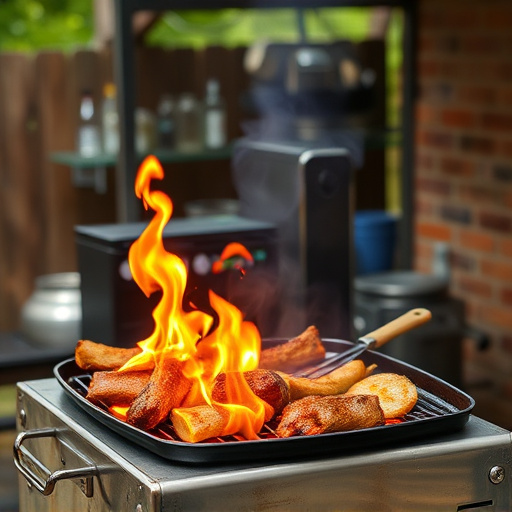
Before throwing your BBQ ribs into the oven, consider the power of a dry rub—a magical mixture that enhances flavor and creates an irresistible crust. This simple yet effective technique is key to achieving tender, succulent ribs. Dry rubs are a blend of spices, often including salt, pepper, paprika, garlic powder, and brown sugar, which stick to the meat, infusing it with a burst of savory flavors during the low-and-slow cooking process.
By rubbing this spice mixture all over your ribs before baking, you’re not just seasoning the surface; the spices penetrate the meat, adding depth and complexity to its natural tastes. This step is especially crucial for oven-cooked BBQ ribs, as it compensates for the lack of direct heat and smoke, which are typically used in traditional BBQ methods. The dry rub acts as a shield, locking in moisture and ensuring your ribs turn out juicy and tender, with a delightful crunchy exterior.
Mastering the Art of Slow Cooking: Temperatures and Times
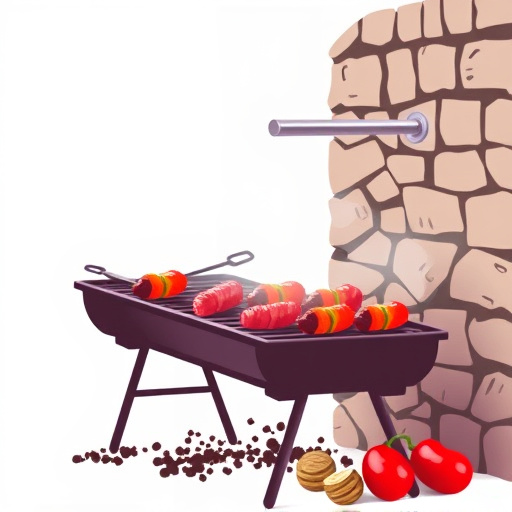
Mastering the art of slow cooking is key to achieving tender, juicy BBQ ribs in an oven. The ideal temperature range for this method is between 225°F and 250°F (approximately 107°C to 121°C). At these lower temperatures, the magic happens slowly but surely – collagen breaks down, transforming into gelatin, which keeps your ribs moist and tender. Times can vary depending on the size of your rib rack, but typically, you’re looking at 3 to 4 hours for a full rack.
This slow and steady approach allows flavors from your BBQ sauce or dry rub to deeply penetrate the meat, creating a mouthwatering blend of spices and juices. Remember, patience is paramount; checking on your ribs regularly ensures they don’t dry out. With consistent heat and moisture, you’ll be rewarded with a perfect, tender BBQ rib that’s sure to impress.
Monitoring and Testing for Tenderness: Knowing When They're Ready
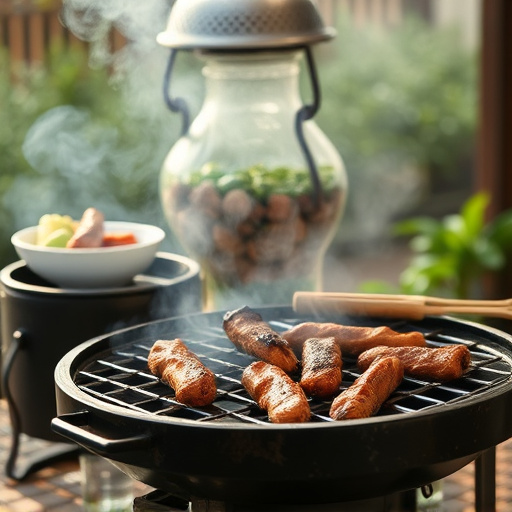
When cooking ribs low and slow in the oven for that perfect, melt-in-your-mouth tenderness, monitoring is key. It’s essential to understand that rib meat releases its moisture slowly, making it challenging to determine doneness visually. The best way to know if your BBQ ribs recipe is ready is by testing for tenderness. Insert a fork or a tenderizer into the thickest part of the rib; if it slides in easily and the meat starts to separate from the bone, they’re nearly there! Remember, low and slow cooking involves patience, so resist the urge to rush the process.
Regularly checking the temperature with a meat thermometer is another crucial step. Ribs are typically done around 195-203°F (91-95°C), ensuring they reach the safe minimum internal temperature for eating. This precise monitoring ensures that your ribs are cooked evenly, locking in that mouthwatering juiciness and flavor from the BBQ sauce or dry rub you’ve marinated them in.
Tips for Serving and Enjoying Your Perfectly Cooked BBQ Ribs
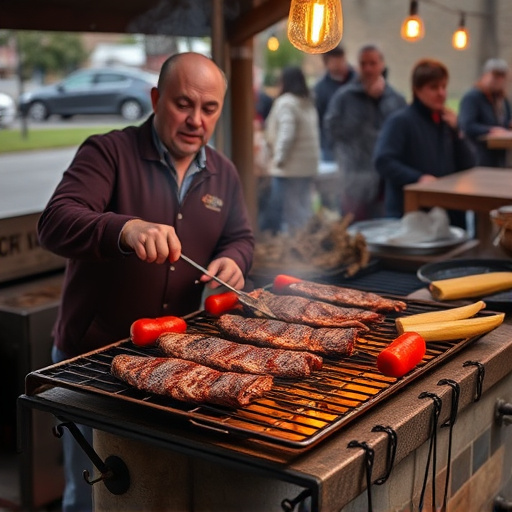
After your BBQ ribs have reached that mouthwatering level of tenderness, it’s time to let them rest for a few minutes before serving. This allows the juices to redistribute throughout the meat, ensuring each bite is juicy and flavorful. For an authentic barbecue experience, pair your perfectly cooked BBQ ribs with classic sides like coleslaw, baked beans, or cornbread. These accompaniments not only complement the rich, smoky flavors of the ribs but also add texture and variety to your plate.
When it comes to enjoying your BBQ ribs recipe oven-style, consider serving them family-style, allowing everyone to help themselves. This informal approach encourages conversation and ensures that every guest can customize their plate according to their preferences. For a special occasion, you can also display the ribs on a large platter with all the fixings, letting your guests indulge in a true BBQ feast.
